Tips, Tricks and Best Practices
Training videos are one of the most effective and efficient ways to onboard new employees. They can help you save time and money, increase engagement and retention, and improve performance and satisfaction. In fact, according to a study by Wyzowl, 94% of businesses that use a high-quality training video for training say it has a positive impact on employee learning and development.
But how do you create training videos that are not only informative but also interesting and entertaining? How do you create a good training video to make sure your new hires are not bored or overwhelmed by the amount of information they need to learn?
The answer is simple: you need to use different types of training videos that suit your content, audience, and goals. You need to vary your training video formats, format throughout, style, and tone to keep your viewers hooked and motivated. You need to use creative and innovative techniques to make your training videos stand out from the crowd.
In this article, we will show you 10 effective training video ideas that can energize your employee onboarding process. These ideas are based on proven methods and best practices that have been used by successful companies and organizations around the world making great training videos. Whether you want to teach a skill, explain a concept, or inspire a behavior, these training video ideas will help you achieve your objectives.
Introduction: Why Use Training Videos for Employee Onboarding?
Before we dive into the 10 training video ideas, let’s first understand why using training videos for both employee training and onboarding is a smart move. Here are some of the benefits of using training videos for employee onboarding:
- Training videos save time and money: Compared to traditional in-person training, training videos can save you a lot of time and money. You don’t need to hire trainers, book venues, or arrange travel expenses. You can create training videos once and use them repeatedly for multiple employees. You can also update them easily whenever needed.
- Training videos increase engagement and retention: According to a study by Forrester Research, employees are 75% more likely to watch a video than read a document or an email. Training videos can capture the attention of your new hires and keep them interested in learning. They can also help them retain information better by using visuals, sounds, and stories.
- Training videos improve performance and satisfaction: Training videos can help your new hires learn new skills and knowledge faster and easier. They can also help them apply what they have learned to their work situations more effectively. This can lead to improved performance and productivity, as well as increased satisfaction and loyalty.
As you can see, training videos are a powerful tool for employee onboarding. But not all training videos are created equal. You need to use the right type of employee training video for the right purpose. That’s why we have compiled this list of 10 great training videos and video ideas that can help you create engaging and effective training videos for your new hires.

Idea #1: Presenter Style Video
A presenter-style video is a video where a person speaks directly to the camera, explaining a topic or demonstrating a skill. This is one of the simplest and most effective ways to convey information and personality. A presenter style can make a great training video that can help you establish rapport and trust with your new hires, as well as showcase your expertise and authority.
Presenter-style videos are ideal for introducing yourself or your company, giving an overview of a subject, or providing tips and advice. They are also great for delivering motivational messages or sharing stories and testimonials.
To create a presenter-style video, you will need a camera, a microphone, a tripod, and a good lighting setup. You will also need to prepare a script or an outline of what you want to say and practice your delivery before recording. Make sure you speak clearly and confidently, maintain eye contact with the camera, and use gestures and facial expressions to enhance your communication.
Some examples of presenter-style videos are:

Idea #2: Screen Recording Video
A screen recording video is a video where the computer screen is recorded, showing how to use software or a website. This is a great way to teach employees how to navigate digital tools and platforms that they will need to use in their work. A screen recording video can help you demonstrate step-by-step instructions, show tips and tricks, or highlight features and functions.
Screen recording videos are ideal for training employees on how to use specific applications, such as email, CRM, or project management software. They are also useful for showing how to access online resources, such as intranet, e-learning, or support portals.
To create a screen-recording video, you will need screen-recording software, such as Camtasia, Screencast-O-Matic, or Loom. You will also need a microphone to record your voice-over narration. You can either record your screen and voice at the same time or record them separately and edit them together later. Make sure you speak clearly and concisely, use simple language and terminology, and highlight the important parts of the screen with annotations or zooms.
Some examples of screen-recording videos are:
- [How to Use Gmail]: A video where Google shows how to use its email service, covering basic functions such as composing, sending, receiving, organizing, and searching emails.
- [How to Use Salesforce]: A video where Salesforce shows how to use its CRM software, covering essential features such as contacts, accounts, leads, opportunities, reports, and dashboards.
- [How to Use Slack]: A video where Slack shows how to use its collaboration platform, covering key aspects such as channels, messages, reactions, emojis, and integrations.

Idea #3: Animated Video
An animated video is a video where graphics, icons, characters, and text are animated to illustrate a concept or a process. This is a fun and engaging way to simplify complex ideas and make them more memorable. An animated video can help you visualize data, diagrams, or scenarios that are hard to explain with words or images alone.
Animated videos are ideal for teaching abstract or theoretical topics, such as company culture, values, or vision. They are also effective for explaining how something works, such as a product, a service, or a system.
To create an animated video, you will need animation software, such as Powtoon, Vyond, or Animaker. You will also need a microphone to record your voice-over narration, or you can use a text-to-speech tool to generate synthetic voices. You can either choose from a library of pre-made templates and characters, or you can create your own custom animations. Make sure you use clear and simple language, use colors and sounds to enhance your message, and keep your animations short and sweet.
Some examples of animated videos are:
- [What is Dropbox?]: A video where Dropbox explains what its cloud storage service is and how it works, using simple graphics and icons.
- [What is Airbnb?]: A video where Airbnb explains what its online marketplace for accommodation is and how it works, using colorful characters and scenarios.
- [What is Spotify?]: A video where Spotify explains what its music streaming service is and how it works, using catchy music and text.
Idea #4: Interactive Video
An interactive online training video is a video where the viewer can interact with the content, such as clicking on buttons, answering questions, or choosing options. This is a powerful way to increase participation and feedback and tailor the learning experience to individual needs. An interactive excellent training video can help you assess the knowledge and skills of your new hires, as well as provide them with personalized feedback and guidance.
Interactive videos are ideal for testing employees on what they have learned, such as facts, concepts, or procedures. They are also useful for providing employees with choices and consequences, such as scenarios, simulations, or branching stories.
To create an interactive video, you will need interactive video software, such as H5P, Rapt Media, or Kaltura. You will also need video editing software to create your base video content. You can either use existing videos or create your own videos with a camera or animation software. Then you can add interactive elements to your videos, such as buttons, quizzes, polls, surveys, menus, etc. Make sure you design your interactions carefully, provide clear instructions and feedback, and create meaningful outcomes for your viewers.
Some examples of interactive videos are:
- [How to Make a Latte]: A video where Starbucks shows how to make a latte, and asks the viewer to answer questions along the way.
- [How to Handle Customer Complaints]: A video where Zendesk shows how to handle customer complaints, and asks the viewer to choose how to respond in different situations.
- [How to Survive a Zombie Apocalypse]: A video where The Walking Dead shows how to survive a zombie apocalypse, and asks the viewer to make decisions that affect the story.

Idea #5: Scenario-Based Video
A scenario-based video is a video where a realistic situation or a problem is presented, and the viewer is asked to apply their knowledge or skills to solve it. This is an effective way to develop critical thinking and decision-making abilities and prepare employees for real-world challenges. A scenario-based video training program can help you create immersive and engaging learning experiences, as well as measure the impact and outcomes of your own training program.
Scenario-based instructional videos are ideal for training employees on how to handle complex or sensitive issues, such as customer service, sales, negotiation, or conflict resolution. They are also suitable for training employees on how to comply with rules and regulations, such as safety, ethics, or privacy.
To create scenario-based video training, you will need a camera, a microphone, a tripod, and a good lighting setup. You will also need to prepare a script or a storyboard of your next training video scenario, and hire actors or use employees to play the roles. You can either film your scenario in one take or use multiple shots and angles to create more dynamic and realistic scenes. Make sure you define your learning objectives, create realistic and relevant scenarios, and provide constructive feedback and guidance.
Some examples of scenario-based videos are:
- [How to Deal with an Angry Customer]: A video where Zendesk shows how to deal with an angry customer, and provides feedback on the employee’s performance.
- [How to Negotiate a Salary Raise]: A video where LinkedIn shows how to negotiate a salary raise, and provides tips and strategies on how to achieve the best outcome.
- [How to Prevent a Fire Hazard]: A video where OSHA shows how to prevent a fire hazard in the workplace, and provides examples of what to do and what not to do.
Idea #6: Testimonial Video
A testimonial video is a video where existing employees share their experiences, opinions, or advice about working for the company or in a specific role. This is a valuable way to build trust and credibility and inspire new hires to join the team. A testimonial video can help you showcase your company culture, values, and vision, as well as highlight the benefits and opportunities of working for your organization.
Testimonial videos are ideal for attracting and retaining talent, knowledge retention, as well as boosting employee morale and loyalty. They are also effective for sharing best practices, lessons learned, or success stories among employees.
To create a testimonial video, you will need a camera, a microphone, a tripod, and a good lighting setup. You will also need to select employees who are willing and able to share their stories and opinions in an authentic and positive way. You can either interview them on camera or ask them to record themselves using their own devices. Make sure you ask open-ended questions, encourage honest feedback, and edit out any irrelevant or negative parts.
Some examples of testimonial videos are:
- [Why I Love Working at Netflix]: A video where Netflix employees share why they love working for the streaming service, and what makes it unique and different from other companies.
- [What It’s Like to Work at Starbucks]: A video where Starbucks employees share what it’s like to work at the coffee chain, and what they enjoy and learn from their job.
Idea #7: Storytelling Video
A storytelling video is a video where a story is told to illustrate a point or convey a message. This is an engaging way to capture attention and emotion and connect with the audience on a deeper level. A storytelling video can help you communicate your brand identity, values, and mission, as well as persuade or inspire your viewers to take action.
Storytelling videos are ideal for creating emotional and impactful training videos, such as raising awareness, generating interest, or creating loyalty. They are also useful for creating memorable experiences, such as sharing customer stories, employee stories, or company stories.
To create a storytelling video, you will need a camera, a microphone, a tripod, and a good lighting setup. You will also need to craft your story using the elements of storytelling, such as characters, setting, plot, conflict, resolution, etc. You can either use real stories from your customers or employees or create fictional stories that relate to your topic or goal. Make sure you use clear and compelling language, use visuals, and sounds to enhance your story, and keep your story short and simple.
Some examples of storytelling videos are:
- [How Airbnb Changed My Life]: A video where an Airbnb host tells how Airbnb changed his life by allowing him to travel the world and meet new people.
- [How I Learned to Code in 6 Months]: A video where a Codecademy user tells how he learned to code in 6 months using Codecademy’s online courses and projects.
Idea #8: Gamified Video
A gamified video is about creating a training video or video where elements of game design are incorporated into the learning process, such as points, badges, levels, or rewards. This is an exciting way to motivate employees and make learning fun and competitive. A gamified video can help you increase engagement and retention, as well as measure progress and performance.
Gamified videos are ideal for reinforcing knowledge and skills, such as facts, concepts, or procedures. They are also effective in encouraging behavior change, such as habits, attitudes, or actions.
To create a gamified video, you will need gamification software, such as Kahoot, Quizizz, or Classcraft. You will also need video editing software to create your base video content. You can either use existing videos or create your own videos with a camera or animation software. Then you can add gamification elements to your own training videos, such as quizzes, challenges, leaderboards, badges, etc. Make sure you define your learning objectives, create relevant and challenging questions, and provide immediate and meaningful feedback.
Some examples of gamified videos are:
- [How to Speak Spanish]: A video where Duolingo teaches how to speak Spanish using gamified quizzes and exercises.
- [How to Play Guitar]: A video where Yousician teaches how to play guitar using gamified challenges and feedback.
Idea #9: Microlearning Video
A microlearning video is a short video that covers one specific topic or skill in a few minutes. This is an ideal way to deliver bite-sized information that can be easily consumed and retained. A microlearning video can help you provide just-in-time learning, as well as refresh and reinforce previous learning.
Microlearning videos are ideal for teaching simple or basic topics, such as definitions, terms, or rules. They are also useful for teaching quick or practical skills, such as tips, tricks, or hacks.
To create a microlearning video, you will need a camera, a microphone, a tripod, and a good lighting setup. You will also need to prepare a script or an outline of what you want to say and practice your delivery before you start video recording it. Make sure you speak clearly and concisely, use simple language and terminology, and focus on one key point or takeaway.
Some examples of microlearning videos are:
- [How to Tie a Tie]: A video where The Art of Manliness shows how to tie a tie using the four-in-hand knot.
- [How to Make a Paper Airplane]: A video where Origami Way shows how to make a paper airplane using a simple folding technique.
Idea #10: Video Series
A video series is a collection of videos that are related by theme or topic and form a coherent learning path. This is a convenient way to organize content into manageable chunks that can be accessed anytime and anywhere. A video series can help you cover a broad or complex subject, as well as provide a structured and consistent learning experience.
Video series is ideal for teaching comprehensive or advanced topics, such as courses, programs, or curricula. They are also suitable for teaching sequential or cumulative skills, such as processes, methods, or systems.
To create a video series, you will need a camera, a microphone, a tripod, and a good lighting setup. You will also need to plan your video series using a curriculum or an outline of your content and divide it into logical and meaningful segments. You can either use different types of videos for each segment or use the same type of video with variations. Make sure you use clear and consistent titles, introductions, and conclusions for each type of training video used, and link them together with transitions, recaps, or previews.
Some examples of video series are:
- [How to Learn Python]: A video series where Codecademy teaches how to learn Python from beginner to advanced level, covering topics such as syntax, data types, functions, loops, conditionals, classes, modules, etc.
- [How to Meditate]: A video series where Headspace teaches how to meditate using different techniques and themes, such as mindfulness, breathing, focus, relaxation, etc.
Conclusion: How to Create High-Quality Training Videos
Training videos are an essential part of any employee onboarding process. They can help you deliver effective and engaging training that can boost your new hires’ knowledge, skills, and confidence.
By using different types of corporate training videos, you can cater corporate training to different learning styles, preferences, and needs.
But creating high-quality online training and videos is not an easy task. You need to consider many factors, such as your content, audience, goals, budget, time, and tools. You also need to follow some tips and best practices to ensure your training videos are clear, concise, and impactful.
Tips and best practices for creating high-quality training tutorial video tutorials and videos too:
Define your learning objectives:
Before you start creating your training videos, you need to define what you want your new hires to learn and achieve from them. You need to set specific, measurable, achievable, relevant, and time-bound (SMART) learning objectives that align with your business goals and expectations.
Know your audience:
You also need to know who your new hires are, what they already know, what they need to know, and how they prefer to learn. You need to conduct a learner analysis to understand their characteristics, needs, preferences, and challenges. This will help you tailor your training videos to suit their level, style, and pace of learning.
Choose the right type of video:
As we have seen in this article, there are different types of training videos that you can use for different purposes. You need to choose the type of video that best fits your content, audience, and goals. You can also use a combination of different types of videos to create a more diverse and engaging learning experience.
Use clear audio and visuals:
One of the most important aspects of creating high-quality training videos is using clear audio and visuals. You need to make sure your sound quality is crisp and clear, without any background noise or distortion. You also need to make sure your video quality is sharp and bright, without any blur or glare. You can use a good camera, microphone, tripod, and lighting setup to achieve this. You can also use video editing software to enhance your audio and visuals further.
Add captions and transcripts:
Another way to improve the quality of your training videos is to add captions and transcripts. Captions are text overlays that display what is being said in the video. Transcripts are text documents that contain the full script of the video. Adding captions and transcripts can help you make your training videos more accessible, inclusive, and searchable. They can also help your new hires learn better by providing them with multiple modes of input and output.
Choose the right tone and style:
The tone and style of your training videos can have a significant impact on how your new hires perceive and respond to them. You need to choose a tone and style that matches your content, audience, and goals. For example, if you want to teach a serious or complex topic, you might want to use a formal or professional tone and style. If you want to teach a fun or simple topic, you might want to use an informal or casual tone and style. You can also use humor, emotion, or storytelling to make your training videos more appealing and memorable.
Keep it short and simple:
One of the biggest challenges of creating training videos is keeping them short and simple. You don’t want to overwhelm or bore your new hires with too much information or too long videos. You want to keep them focused and interested in learning. To do this, you need to use clear and simple language, use bullet points or lists to organize your content and use examples or illustrations to explain your points. You also need to break down your content into manageable chunks and use subheadings or transitions to connect them. You should aim to keep each video between 3 and 10 minutes long, depending on the type and complexity of the topic.
Test and evaluate your videos:
Finally, you need to test and evaluate your training videos before you launch them to your new hires. You need to make sure your training videos are working properly, without any technical glitches or errors. You also need to make sure your training videos are meeting your learning objectives, and satisfying your new hires’ needs and expectations. You can use various methods to test and evaluate your training videos, such as feedback surveys, quizzes, interviews, or analytics. You can then use the results to improve or update your training videos accordingly.
We hope this article has given you some useful ideas on how to create high-quality, professional training videos for your employee onboarding process. By using these ideas, you can create engaging and effective employee training videos that can help you onboard your new hires faster, easier, and better.







